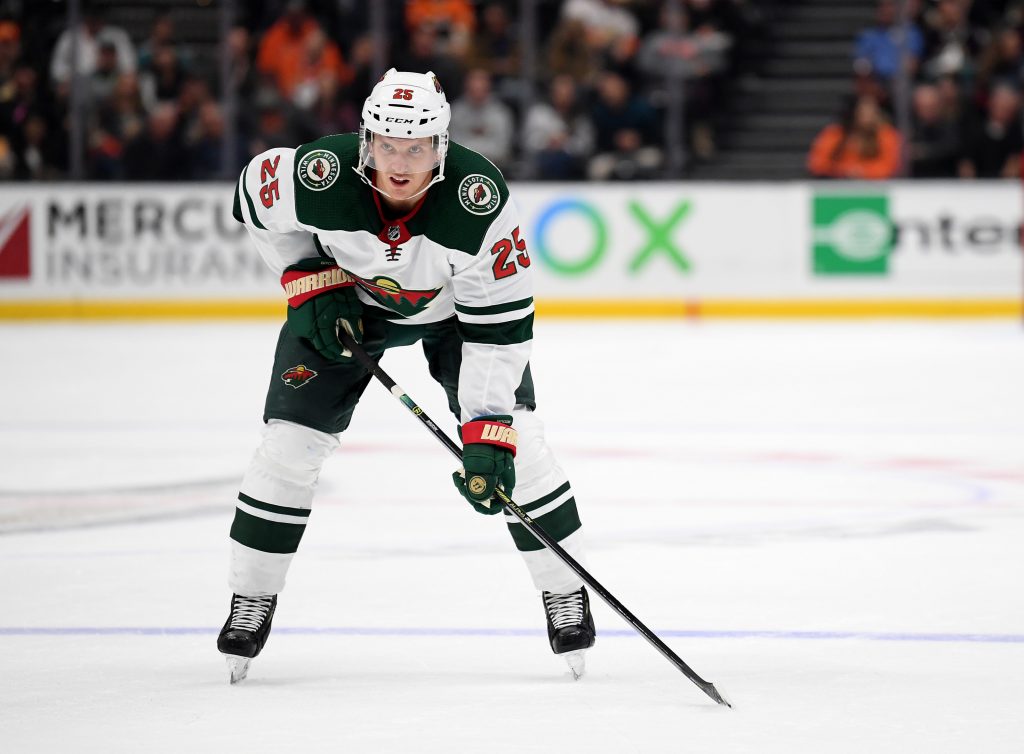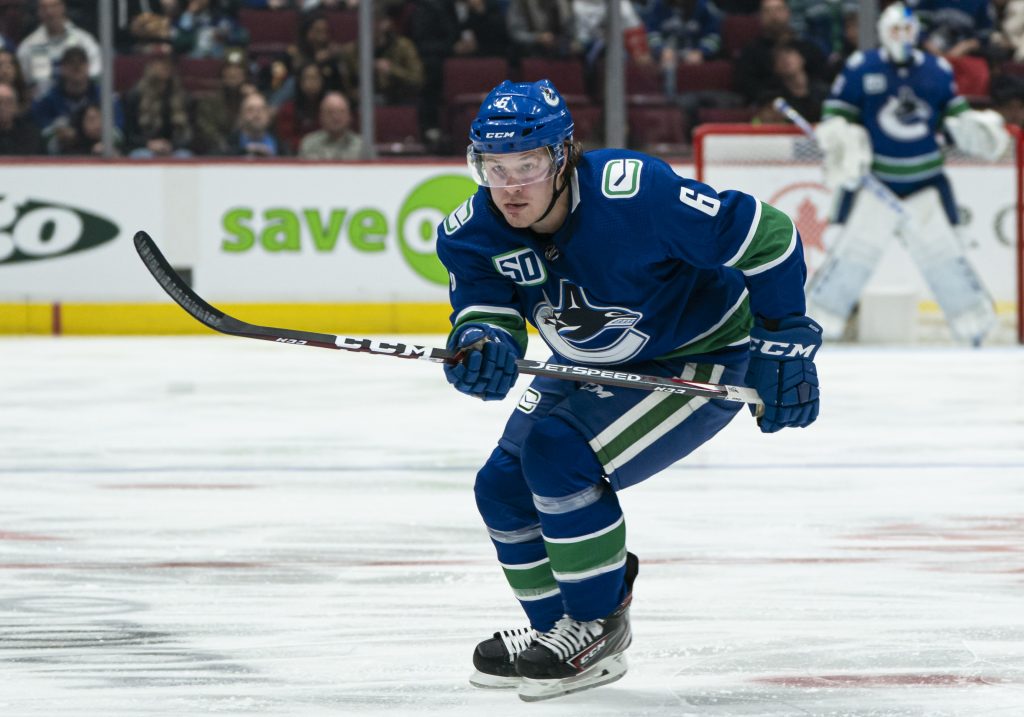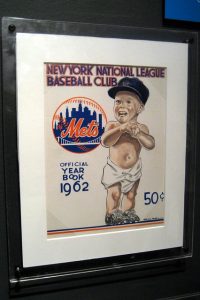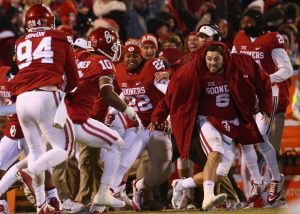It’s easy to appreciate hockey trades. Though it’s difficult to locate a singular reason why, throughout the NHL’s history, even the game’s biggest names have never been totally off the table. Heck, hockey is by far the smallest of the big four North American professional sports, but ask a longtime casual sports fan what transaction they think of when they hear the words “The Trade,” and there’s a good chance they mention the 1988 blockbuster that sent Wayne Gretzky from the Edmonton Oilers to the Los Angeles Kings. Though the NHL is trending this way, the idea of the modern sports trade conjures up images of baseball nerds poring over spreadsheets and even basketball execs shuffling a dozen bit parts around so their star player stops making thinly veiled exit pleas on Twitter. A hockey blockbuster still seems like it’s 50 percent advanced stat digging and cap maneuvering and 50 percent handshake agreement in a smoke-filled room straight out of Goodfellas. It’s just cool.
With the announcement that the upper salary limit won’t increase much over the next few years due to COVID-induced stresses on revenue, we could be in for a trade spike as the league’s 31 teams scramble to reshape their rosters to accommodate the negligible cap movements. Additionally, general managers will have to shuffle things further lest they lose a core piece to NHL Seattle in the expansion draft still scheduled for next summer.
While a dying art, the one-for-one trade is beautiful in its simplicity. Hockey has seen its fair share of front-page star-for-star trades in recent years, like the deals that sent Ryan Johansen to the Predators for Seth Jones, the PK Subban-Shea Weber swap, and the infamous Taylor Hall trade for Adam Larsson that lives on in social media lore because Bob McKenzie began his tweet with: “Trade is one for one.” I’ve written about this phenomenon before, and I think the fact that my smug analysis of the Subban-Weber deal has aged so poorly is a large part of the beauty of these trades.
Below, I’ll spitball a few potential one-for-ones that would shake the league up ahead of the 2020-21 season.
To Philadelphia: John Klingberg
To Dallas: Travis Konecny
The Dallas Stars struggle to score when their dynamo first line of Tyler Seguin, Jamie Benn, and Alex Radulov isn’t on the ice. Their 131 even-strength goals this season ranked second-to-last in the league. This offseason, Dallas should continue to try and alleviate the scoring burden placed on that aforementioned trio. Enter Konecny, who can play both center and winger and scored 61 points (24 goals) in 66 games this year. It gets better – the 23-year old is signed until 2025 at an ultra-reasonable $5.5 million cap hit.
Philadelphia would only pick up the phone on a Konecny trade if they were getting somebody like John Klingberg in return. If Konecny is a bona fide first-liner, Klingberg has been a top-20 defenseman in the league practically since breaking into the NHL in 2014. The former fifth-rounder is everything former golden child Shayne Gostisbehere was supposed to be: a play-driver and elite power-play quarterback who can more than hold his own in the defensive zone. Though his offensive numbers were down this year, the fact that Klingberg still ranked as Dom Luszczyszyn’s 24th-best defenseman in the league is a testament to the Swede’s underrated two-way abilities. At just 27 years old on an incredibly team-friendly $4.25 million cap hit until 2022, Klingberg upgrades the Philly roster in the short-term as they gear up for a few Stanley Cup runs while simultaneously freeing up a precious bit of cap room.
Dallas can part with Klingberg because the trio of Miro Heiskanen, Esa Lindell, and Jamie Oleksiak has shown they’ll be just fine anchoring the blueline, but they could use more skill up front even after signing Joe Pavelski last summer. For the Flyers, they’re slated to lose a capable forward like James van Riemsdyk unless they make a side deal with Seattle GM Ron Francis ahead of the expansion draft – dealing Konecny solves that issue, while they don’t expose any really valuable defenseman after acquiring Klingberg.
To New York: Jonas Brodin
To Minnesota: Igor Shesterkin
If there are any reading this, Rangers fans will probably be calling for my head after reading that one. After all, the 24-year old Shesterkin was stellar in his brief NHL debut this season, rocking a .932 save percentage while stopping an stunning 9.34 goals above expected in just 12 games. This would certainly be an aggressive move to complete the rebuild that New York GM Jeff Gorton has methodically engineered to this point, which saw the Rangers earn a berth in the expanded playoff with a 37-28-5 record this year after languishing near the bottom of the Metropolitan Division in previous seasons.

Brodin is a defensive stalwart.
Brodin, who’s 27, would be a terrific way to cash in on Shesterkin’s terrific rookie season, however. Though he’s never recorded over 30 points in a season, Brodin is quietly one of the finest defensive defensemen in the league, as no D-man with fewer projected points graded out higher in Luszyczyszyn’s Game Score Value Added index. The lefty would immediately balance out a Rangers blueline that’s stacked with more offensively gifted right-shots like Adam Fox, Tony DeAngelo, and Jacob Trouba. The Rangers could extend Brodin after 2021 when a host of bad contracts are coming off their books, while this doesn’t impact their protected list much because Fox will be exempt from the expansion draft.
For Minnesota, Brodin and fellow rearguard Matt Dumba have been the subject of constant trade rumors because of the Wild’s difficulties in net and in scoring goals. They won’t be able to keep both players next year unless they opt to do an 8-1 protection system or strike a pricey side deal with Seattle, so this trade would mitigate that issue and potentially provide a long-term answer in net for new GM Bill Guerin. The Wild got the third-lowest save percentage in the league from their netminders this year, and while taking on Shesterkin comes with risk, the Russian’s upside may be too much to pass up. Further, they open up cap space in the short-term to perhaps find scoring forwards and won’t have to pay Shesterkin decent money until the contracts of Mikko Koivu and incumbent goalie Devan Dubnyk are expired.
To Minnesota: Brock Boeser
To Vancouver: Jonas Brodin

Boeser popped up in the rumor mill seemingly out of nowhere.
A rumor surfaced last weekend that the Canucks were surprisingly looking into trading their 23-year old stud winger, ideally as a major sweetener in a trade that also moves one of Vancouver’s many bad veteran contracts out. So, while a one-for-one involving Boeser would be a major shock, Brodin is a name that again makes a lot of sense. The Canucks will likely be looking for a top-four defenseman with a reasonable cap hit in return for Boeser, and they’d be interested in Brodin for the same reasons New York would. Brodin frees up cap room now, could be extended when the contracts of Brandon Sutter and Tanner Pearson expire after 2021, and would add a shutdown element to an already-strong D-corps led by rookie Quinn Hughes.
The Wild need the goals that the Minnesota native Boeser would provide. While they scored at a middle-of-the-pack rate this season, the Wild were boosted by a league-high 10.6% shooting percentage at 5-on-5, a mark which could prove unsustainable. Though they’d prefer a center or a goalie, Boeser is a rock-solid first liner, and for a team with playoff aspirations, Minnesota doesn’t have many of those. Though Boeser’s goals per game declined to 0.28 this season after hovering near 0.5 previously, that is likely an aberration itself (Boeser’s own shooting percentage dipped to 9.5% after being as high as 16.2% in 2017-18). Acquiring a forward for Brodin makes Minnesota’s expansion protected list much easier to compile and doesn’t shorten their window to contend.
To Winnipeg: Patrick Kane
To Chicago: Patrik Laine
This would be a doozy of a deal between Central Division rivals, and admittedly moves from “trades I could actually envision” into territory more like “trades I think just make sense.” And Kane, who turns 32 in November, has a no-move-clause he would need to waive in order to push any transaction through.
For Chicago, this one’s easy to sign off on. While Kane has been the face of the organization (with others) for a decade, he’s been superhuman the last two seasons in particular and the Blackhawks still haven’t even been in the playoff conversation. If the Blackhawks contend again, it’ll be when Kirby Dach, Adam Boqvist, Alex DeBrincat & Co. are all producing together – not for a few more years when Kane might be on the wrong side of 35. Meanwhile, adding a player as talented as Laine to that aforementioned young nucleus would give Chicago fans something to get excited about and would give the Blackhawks a much healthier long-term outlook than the current half-Cup era veterans, half-up-and-comers roster does.

Kane has been pulling the boat by himself in Chicago of late.
It’s a tougher sell to Jets fans. When he was drafted 2nd overall in 2016, Laine was supposed to be for Winnipeg what Kane has been for Chicago, and a thirty-six goal rookie season only confirmed the Finn’s ridiculous skill. The Jets put up with some production droughts and attitude questions along the way, but Laine rebounded this season to put up 63 points in 68 games after a poor 2018-19. And it’s not like the Jets’ window at the Cup is closing – core names like Kyle Connor, Mark Scheifele, Josh Morrissey, and Connor Hellebuyck are all between 23 and 27.
So what gives? Maybe GM Kevin Chevaldayoff capitalizes on what he knows that much of the hockey world doesn’t always acknowledge – Laine is an absolute travesty defensively. Just like no player with fewer projected points had a greater overall impact than Jonas Brodin, there’s no player in the league with more projected points (or projected goals) than Patrik Laine that has a weaker overall GSVA. Laine is a total liability when it comes to anything other than getting on the scoresheet, and though that’s a valuable currency to deal in, he grades out as a second-line forward in GSVA, right below names like Christian Dvorak and Andreas Johnsson.
There’s no doubt Laine is going to score a lot of goals for a long time. It makes plenty of sense for Chicago to add him to their promising core group of early-twenties skaters instead of continuing to waste what’s left of Kane’s prime. But for the Jets, upgrading from Laine to Kane, a top-ten player leaguewide, opens up a whole new world of possibilities for the franchise in the short-term.
To Carolina: Jack Eichel
To Buffalo: Sebastian Aho
Any Sabres fan will tell you that they’re not moving Eichel unless the animosity between franchise and player reaches a fever pitch. Buffalo got burned when Ryan O’Reilly walked out the door for pennies on the dollar, and they’ll be hell-bent on acquiring a proven elite player if Eichel ever does get shipped out. As one of the league’s best players at 23 years old, Eichel would fetch a king’s ransom in a trade. Similarly, the Sabres would hold a great deal of leverage in any negotiations because of Eichel’s terrific contract, which has six years left at a $10 million cap hit.
Aho might not be the first name that comes to mind in conversations about the league’s best young centers, but he deserves to be. The 22-year old Finn finished two spots behind Eichel in Luszczyszyn’s GSVA index (19th vs. 21st leaguewide). Aho has left little doubt he’ll be a first-line, play-driving center for a decade-plus into the future. Here are his basic stats and contract:
2018-19: 30G/53A/83P in 82G
2019-20: 38G/28A/66P in 68G
Until 2024 (4 more yrs) at $8.454M
Compare to Eichel:
2018-19: 28G/54A/82P in 78G
2019-20: 36G/42A/78P in 68G
Until 2026 (6 more years) at $10M
With the goal uptick he saw in 2019-20, Aho settled any doubts that he can’t put the puck in the net at any elite level. So, maybe not quite an Eichel-level talent, but not miles off, either. At 22 years old, Aho is on a contract that’s nearly as tremendous as Eichel’s, with a smaller cap hit but a little less cost certainty into the future.
So, why would the Hurricanes listen on something like this? I think old-school GM Don Waddell could be intrigued. The Canes haven’t had a true face of the franchise since Eric Staal’s best years at the beginning of the decade, and they’ve always had a tough time drawing fans to the gate. While Aho is spectacular, Eichel is a more marketable player who’s always just a shift away from his next moment of mind-bending skill. While Carolina had a nice narrative last season as the plucky underdog who battled to the ECF, acquiring Eichel along with the deadline deal for Vinny Trocheck sends a clear message that Carolina is all-in on winning a Cup.
For the Sabres, this is the antithesis of the O’Reilly deal and would endear new GM Kevyn Adams to the fans in that regard. Meanwhile, there should be some chemistry between the potential Finnish core of Aho, Rasmus Ristolainen, Henri Jokiharju, and Ukko-Pekka Luukonen. There’s a little more cap room to play with for the next few years while the Stanley Cup window with the aforementioned group plus young stars Rasmus Dahlin and Dylan Cozens hasn’t been shortened at all.




